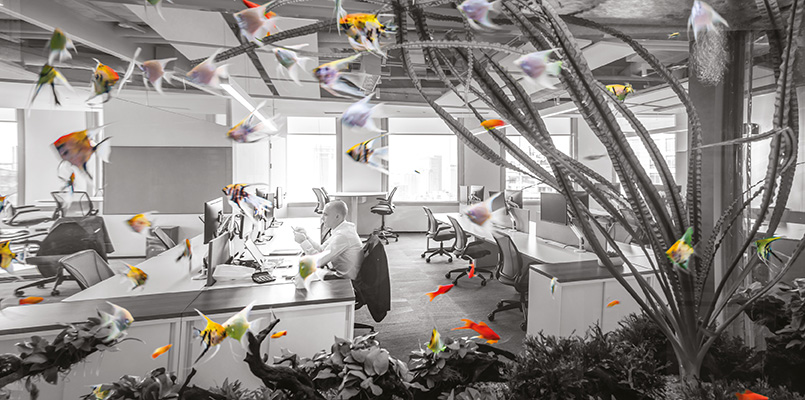Putting Wellness at the Heart of Building Design
September 26, 2019
Building owners and corporate occupiers can no longer afford to ignore the demand for the well-being of occupants.

It is no longer just about being Green. These days, it is about how well you feel in your physical environment. The built environment has immense potential to affect health, emotions and the quality of work we produce. Though not a new concept, the demand for wellness in workplaces is gaining traction along with the rise of the wellness industry. In response, the real estate industry is collaborating with health and wellness consultants, sustainability experts, designers and architects to establish and promote wellness in our built environment as a way of life.
RECOGNISING EFFORTS IN WELLNESS DESIGN
There are many widely used building rating systems that already include some measure of wellness parameters like indoor air quality (IAQ) and daylighting. However, until recently, there has been none that focused exclusively on them. The prominence of performance-based building rating tools launched in the last decade that focus on wellness design efforts has given this movement a boost.
DRAWING PARALLELS WITH GREEN CERTIFICATIONS
Although Green design is driven primarily by environmental attributes like energy conservation and resource efficacy while wellness design is focused on people, many wellness features are Green in nature. For instance, biophilic design and good indoor environmental quality are parallel concepts in both arenas. The achievement of some WELL points can help to score for credits under LEED certification. These include elimination of tobacco smoking, mitigation of pollution during construction, meeting minimum fresh air rates and provisions that encourage walking and cycling.
WELL CERTIFICATION OFFERS NEW DIMENSIONS
The unique nature of the WELL standard lies in its incorporation of soft service parameters, which requires the team to explore management and operational policies that relate beyond the physical space. For example, WELL introduces various avenues for promotion of healthy dietary behaviour, a major component of wellness. These include locating the project within close proximity to grocery shops selling fresh fruits and vegetables, display of nutritional information for food provided or sold to occupants within the project, and reduced marketing and provision of unhealthy foods.
SHAPE OUR BUILT ENVIRONMENT, SHAPE OUR SOCIETY
With the increasing demand for wellness from employees, tenants and the society at large, we can expect this change in design approach to drive further innovations in the architecture, construction and management of building spaces for a more liveable future.
To read the complete article, get your hardcopy at our online shop/newsstands/major bookstores; subscribe to FuturArc or download the FuturArc App to read the issues.
Previously Published Commentary
Contact us at https://www.futurarc.com/contact-us for older commentaries.

